Expert's Rating
Pros
- Available in large 4TB and 8TB capacities
- Good 10Gbps performer
- Attractive and unusual, if somewhat large, heat-shedding design
Cons
- Requires AC adapter
Our Verdict
More capacity is always better when it comes to storage, and the Desk Drive USB SSD from SanDisk delivers that in either 4TB or 8TB flavors, along with good 10Gbps performance.
SanDisk’s new 10Gbps USB Desk Drive is all about capacity. In fact, it ships only in larger 4TB and 8TB flavors, for $380 and $700 MSRP, respectively — demonstrating a real commitment to a marketing strategy that frames the product as a hard drive replacement.
The Desk Drive is also on the large side for an external SSD and requires external power to function, which while not unheard for an external USB drive of this capacity is a bit unusual for a drive that is only 10Gbps. Perhaps SanDisk is trying to make hard drive transitioners more comfortable?
Further reading: See our roundup of the best external drives to learn about competing products.
What are the Sandisk Desk Drive’s features?
I’ve already spilled some of the beans on this subject — however, as to its size, the Desk Drive measures a rather solid 3.9-inches wide and long, and about 1.5-inches between the slightly concave top and anti-skid bottom. It’s colored in SanDisk’s familiar dark gray, with orange piping encircling the unit near the vertical mid-point of the enclosure.
The back of the Desk Drive has the Type-C USB port, AC adapter jack, and a Kensington lock port. And yes, the drive requires an external power source which the company provides. We did try to use the drive without it, and no dice.
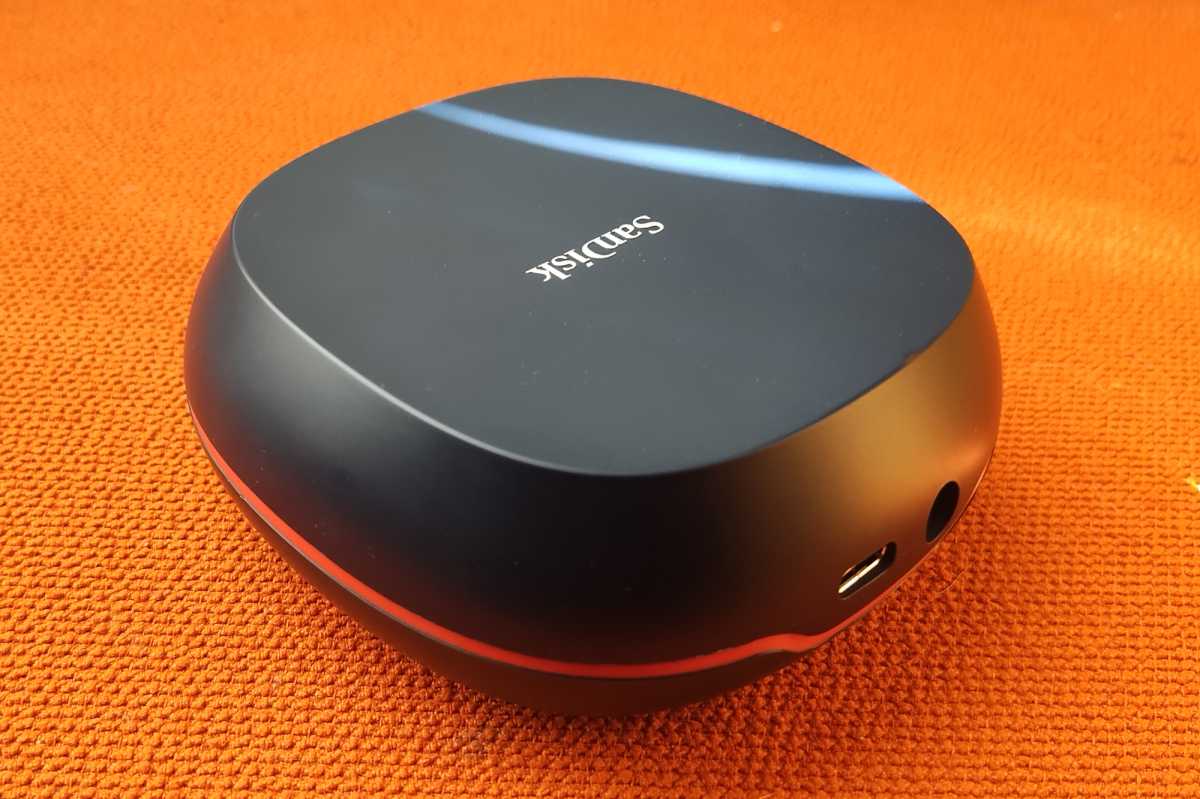
<div class="scrim" style="background-color: #fff" aria-hidden="true"></div>
</div></figure></div>SanDisk apparently learned from its own Extreme Pro whose data-wiping issues may have stemmed from a lack of power, and Seagate’s FireCuda Gaming SSD 20Gbps SSD, which would only perform at 10Gbps on some systems, likely due to the same issue (although thermal throttling could have been the culprit). Note that I have tested many a 10Gbps and 20Gbps SSD that performs just fine using only bus power.
How much does the Desk Drive cost?
Though I already covered pricing up top, it’s helpful to discuss the Desk Drive’s price in relation to what it’s intended to replace — a hard drive. At the time of this writing you could find a name brand external 8TB hard drive for $150 — around 21 percent of the $700 (MSRP) 8TB Desk Drive. Of course, the hard drive provides only around 10 percent of the performance.
So the equation remains roughly the same when it comes to HDDs and SSDs: The former are significantly cheaper per gigabyte, while the latter are far faster, less delicate, and more reliable. That said, HDD reliability is much better than it used to be.
Buy according to need. If your backup is firing off in the middle of the night when speed doesn’t matter as much, go HDD and get a couple for redundancy. If you’re constantly banging on your external storage for work when seconds, minutes, or hours count, pony up the extra bucks for an SSD.
How fast is the SanDisk Desk Drive?
As a 10Gbps USB SSD, the 8TB Desk Drive I tested is of course light years faster than a hard drive and held its own in our testing against its 10Gbps rivals. That said, it’s no match for 20Gbps or 40Gbps SSDs, which generally double the benchmark results and halve the transfer times.
CrystalDiskMark 8 rated the Desk Drive as very facile in sequential transfers for a 10Gbps USB SSD as you can see below. It wasn’t the fastest in every test, but overall it performed quite well.
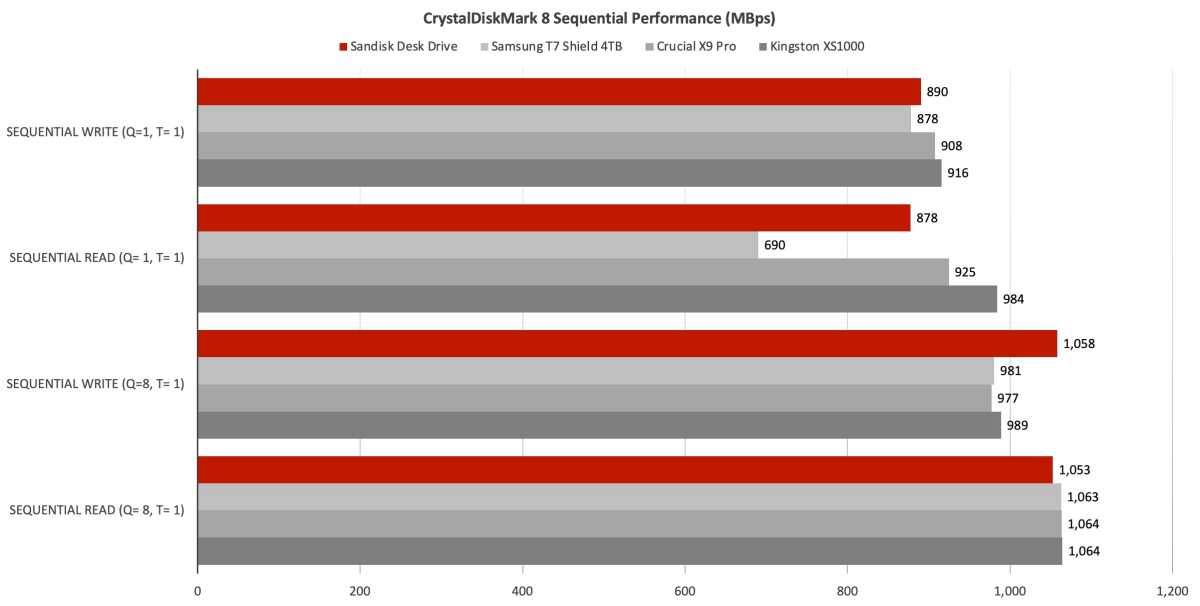
The SanDisk Desk Drive was very competitive in CrystalDiskMark 8.
The SanDisk Desk Drive was very competitive in CrystalDiskMark 8.
Jon L. Jacobi
<div class="lightbox-image-container foundry-lightbox"><div class="extendedBlock-wrapper block-coreImage undefined"><figure class="wp-block-image size-large enlarged-image"><img decoding="async" data-wp-bind--src="selectors.core.image.enlargedImgSrc" data-wp-style--object-fit="selectors.core.image.lightboxObjectFit" src="" alt="SanDisk Desk Drive CDM8 Seq" class="wp-image-2324567" width="1200" height="606" loading="lazy" /><figcaption class="wp-element-caption"><p>The SanDisk Desk Drive was very competitive in CrystalDiskMark 8.</p> </figcaption></figure><p class="imageCredit">Jon L. Jacobi</p></div> </div></figure><p class="imageCredit">Jon L. Jacobi</p></div>The results were more mixed in the random 4K operations. The Desk Drive was fastest in two tests and below average in the other two. As you may notice, this is not unusual for external SSDs — a couple of the other drives are inconsistent as well.
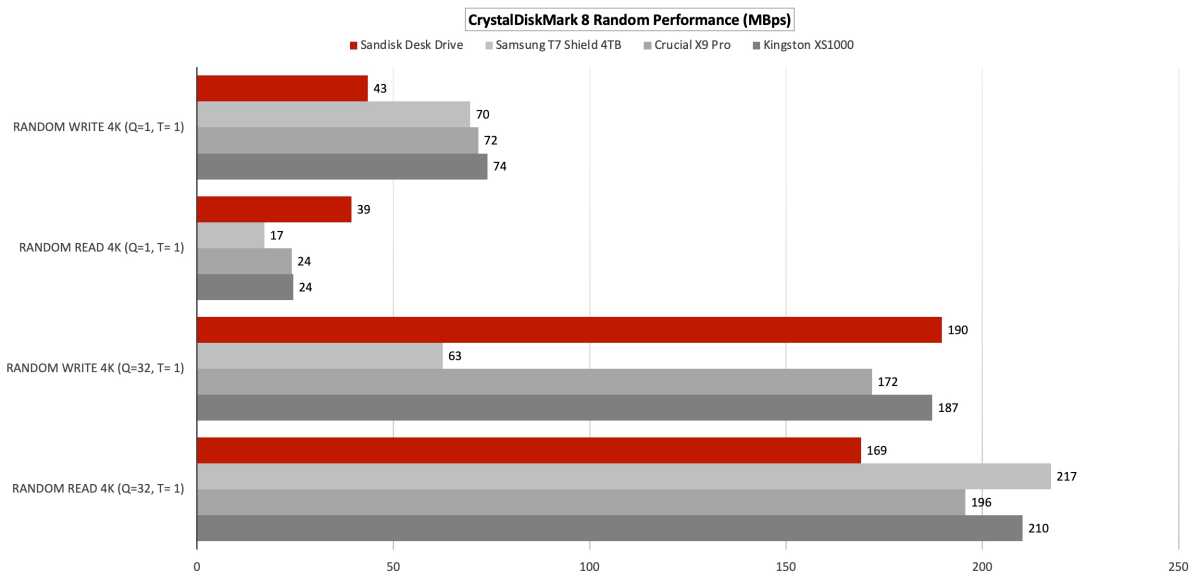
<div class="lightbox-image-container foundry-lightbox"><div class="extendedBlock-wrapper block-coreImage undefined"><figure class="wp-block-image size-large enlarged-image"><img decoding="async" data-wp-bind--src="selectors.core.image.enlargedImgSrc" data-wp-style--object-fit="selectors.core.image.lightboxObjectFit" src="" alt="" class="wp-image-2323679" width="1200" height="582" loading="lazy" /><figcaption class="wp-element-caption">The SanDisk Desk Drive wasn’t quite as fast in random operations, but bestedAutentifică-te pentru a adăuga comentarii
Alte posturi din acest grup


Changing out the Windows wallpaper every now and then can make a desk
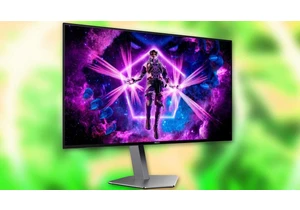
$400 is the lowest I’ve ever seen for a new OLED gaming monitor… but

Adobe has finally delivered on one of the most requested features in
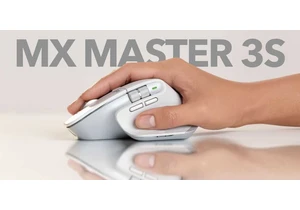
Logitech’s MX Master mouse series is probably the most well-regarded
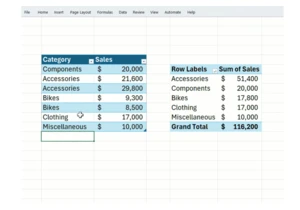
Data wonks, rejoice! Pivot tables now automatically refresh themselve

